A New Fractal-Fractional Version of Giving up Smoking Model: Application of Lagrangian Piece-Wise Interpolation along with Asymptotical Stability
Abstract
1. Introduction
2. Preliminaries
- (1)
- is called ψ-ϕ-contraction if for each ,where denotes the metric function.
- (2)
- is called ψ-admissible if gives .
- (1)
- is ψ-admissible;
- (2)
- There is such that ;
- (3)
- For every sequence in with and for all , we have for all .
- (i)
- There is such that , or;
- (ii)
- There are and so that .
3. Description of the Giving up Smoking Model
- (1)
- : the contact rate between the potential smokers and smokers who smoke occasionally;
- (2)
- : the rate of contact between occasional smokers and heavy smokers;
- (3)
- : the rate at which temporary quitters return back to smoking;
- (4)
- : the rate of natural death;
- (5)
- : the rate of giving up smoking;
- (6)
- : (at a rate ) the fraction of smokers who temporarily give up smoking;
- (7)
- q: (at a rate ) the remaining fraction of smokers who give up smoking forever;
- (8)
- : the rate of becoming a potential smoker.
4. Mathematical Analysis
4.1. Existence of Solutions
4.2. Unique Solution
4.3. Stability Criterion
4.4. Equilibrium Points
4.5. Time-Dependent Basic Reproduction Number
4.6. Sensitivity Analysis
4.7. Asymptotically Stability Analysis
- (a)
- ,
- (b)
- ,
- (c)
- ,
- (d)
- ,
- (e)
- ,
- (a)
- (b)
- (c)
- (d)
- (e)
5. Numerical Algorithm
6. Simulations and Discussion
7. Conclusions
Author Contributions
Funding
Institutional Review Board Statement
Informed Consent Statement
Data Availability Statement
Acknowledgments
Conflicts of Interest
References
- Zaman, G. Qualitative behavior of giving up smoking models. Bull. Malays. Math. Soc. 2011, 34, 403–415. [Google Scholar]
- Sharomi, O.; Gumel, A.B. Curtailing smoking dynamics: A mathematical modeling approach. Appl. Math. Comput. 2008, 195, 475–499. [Google Scholar] [CrossRef]
- Alkhudhari, Z.; Al-Sheikh, S.; Al-Tuwairqi, S. Global dynamics of a mathematical model on smoking. Appl. Math. 2014, 2014, 847075. [Google Scholar] [CrossRef]
- Rahman, G.U.; Agarwal, R.P.; Liu, L.; Khan, A. Threshold dynamics and optimal control of an age-structured giving up smoking model. Nonlinear Anal. Real World Appl. 2018, 43, 96–120. [Google Scholar] [CrossRef]
- Rahman, G.U.; Agarwal, R.P.; Din, Q. Mathematical analysis of giving up smoking model via harmonic mean type incidence rate. Appl. Math. Comput. 2019, 354, 128–148. [Google Scholar] [CrossRef]
- Zhang, Z.; Rahman, G.U.; Agarwal, R.P. Harmonic mean type dynamics of a delayed giving up smoking model and optimal control strategy via legislation. J. Franklin Ins. 2020, 357, 10669–10690. [Google Scholar] [CrossRef]
- Li, X.; Agarwal, R.P.; Gomez-Aguilar, J.F.; Badshah, Q.; Rahman, G.U. Threshold dynamics: Formulation, stability & sensitivity analysis of co-abuse model of heroin and smoking. Chaos Solitons Fractals 2022, 161, 112373. [Google Scholar]
- Caputo, M.; Fabrizio, M. A new definition of fractional derivative without singular kernel. Prog. Fract. Differ. Appl. 2015, 1, 73–85. [Google Scholar]
- Atangana, A.; Baleanu, D. New fractional derivatives with non-local and non-singular kernel: Theory and application to heat transfer model. Therm. Sci. 2016, 20, 763–769. [Google Scholar] [CrossRef]
- Podlubny, I. Fractional Differential Equations; Academic Press: Cambridge, MA, USA, 1999. [Google Scholar]
- Erturk, V.S.; Zaman, G.; Momani, S. A numeric analytic method for approximating a giving up smoking model containing fractional derivatives. Comput. Math. Appl. 2012, 64, 3068–3074. [Google Scholar] [CrossRef]
- Zaman, G.; Islam, S. A non-standard numerical method for a giving-up smoking model. Nonlinear Sci. Lett. A 2010, 4, 397–402. [Google Scholar]
- Zeb, A.; Chohan, I.; Zaman, G. The homotopy analysis method for approximating of giving up smoking model in fractional order. Appl. Math. 2012, 3, 914–919. [Google Scholar] [CrossRef]
- Singh, J.; Kumar, D.; Qurashi, M.A.; Baleanu, D. A new fractional model for giving up smoking dynamics. Adv. Differ. Equ. 2017, 2017, 88. [Google Scholar] [CrossRef]
- Ahmad, A.; Farman, M.; Ghafar, A.; Inc, M.; Ahmad, M.O.; Sene, N. Analysis and simulation of fractional order smoking epidemic model. Comput. Math. Meth. Med. 2022, 2022, 9683187. [Google Scholar] [CrossRef] [PubMed]
- Ucar, S.; Ucar, E.; Ozdemir, N.; Hammouch, Z. Mathematical analysis and numerical simulation for a smoking model with Atangana–Baleanu derivative. Chaos Solitons Fractals 2019, 118, 300–306. [Google Scholar] [CrossRef]
- Atangana, A. Fractal-fractional differentiation and integration: Connecting fractal calculus and fractional calculus to predict complex system. Chaos Solitons Fractals 2017, 102, 396–406. [Google Scholar] [CrossRef]
- Atangana, A.; Qureshi, S. Modeling attractors of chaotic dynamical systems with fractal-fractional operators. Chaos Solitons Fractals 2019, 123, 320–337. [Google Scholar] [CrossRef]
- Khan, H.; Ahmad, F.; Tunc, O.; Idrees, M. On fractal-fractional Covid-19 mathematical model. Chaos Solitons Fractals 2022, 157, 111937. [Google Scholar] [CrossRef]
- Khan, H.; Alzabut, J.; Shah, A.; Etemad, S.; Rezapour, S.; Park, C. A study on the fractal-fractional tobacco smoking model. AIMS Math. 2022, 7, 13887–13909. [Google Scholar] [CrossRef]
- Najafi, H.; Etemad, S.; Patanarapeelert, N.; Asamoah, J.K.K.; Rezapour, S.; Sitthiwirattham, T. A study on dynamics of CD4+ T-cells under the effect of HIV-1 infection based on a mathematical fractal-fractional model via the Adams-Bashforth scheme and Newton polynomials. Mathematics 2022, 10, 1366. [Google Scholar] [CrossRef]
- Abro, K.A.; Atangana, A. Numerical and mathematical analysis of induction motor by means of AB-fractal-fractional differentiation actuated by drilling system. Numer. Meth. Partial Differ. Equ. 2022, 38, 293–307. [Google Scholar] [CrossRef]
- Saad, K.M.; Alqhtani, M.; Gomez-Aguilar, J.F. Fractal-fractional study of the hepatitis C virus infection model. Res. Phys. 2020, 19, 103555. [Google Scholar] [CrossRef]
- Etemad, S.; Avcı, İ.; Kumar, P.; Baleanu, D.; Rezapour, S. Some novel mathematical analysis on the fractal–fractional model of the AH1N1/09 virus and its generalized Caputo-type version. Chaos Solitons Fractals 2022, 162, 112511. [Google Scholar] [CrossRef]
- Asamoah, J.K.K. Fractal-fractional model and numerical scheme based on Newton polynomial for Q fever disease under Atangana-Baleanu derivative. Res. Phys. 2022, 34, 105189. [Google Scholar] [CrossRef]
- Khan, H.; Alam, K.; Gulzar, H.; Etemad, S.; Rezapour, S. A case study of fractal-fractional tuberculosis model in China: Existence and stability theories along with numerical simulations. Math. Comput. Simul. 2022, 198, 455–473. [Google Scholar] [CrossRef]
- Mohammadi, H.; Kumar, S.; Rezapour, S.; Etemad, S. A theoretical study of the Caputo-Fabrizio fractional modeling for hearing loss due to Mumps virus with optimal control. Chaos Solitons Fractals 2021, 144, 110668. [Google Scholar] [CrossRef]
- Owolabi, K.M.; Shikongo, A. Fractal Fractional Operator Method on HER2+ Breast Cancer Dynamics. Int. J. Appl. Comput. Math. 2021, 7, 85. [Google Scholar] [CrossRef]
- Owolabi, K.M.; Shikongo, A.; Atangana, A. Fractal Fractional Derivative Operator Method on MCF-7 Cell Line Dynamics. In Methods of Mathematical Modelling and Computation for Complex Systems. Studies in Systems, Decision and Control; Singh, J., Dutta, H., Kumar, D., Baleanu, D., Hristov, J., Eds.; Springer: Cham, Switzerland, 2022; Volume 373. [Google Scholar]
- Samet, B.; Vetro, C.; Vetro, P. Fixed point theorems for α-ψ-contractive type mappings. Nonlinear Anal. 2012, 75, 2154–2165. [Google Scholar] [CrossRef]
- Granas, A.; Dugundji, J. Fixed Point Theory; Springer: New York, NY, USA, 2003. [Google Scholar]
- Rassias, T.M. On the stability of the linear mapping in Banach spaces. Proc. Amer. Math. Soc. 1978, 72, 297–300. [Google Scholar] [CrossRef]
- Cho, Y.J.; Park, C.; Rassias, T.M.; Saadati, R. Stability of Functional Equations in Banach Algebras; Springer: Cham, Switzerland, 2015. [Google Scholar]
- den Driessche, P.V.; Watmough, J. Reproduction numbers and sub-threshold endemic equilibria for compartmental models of disease transmission. Math. Biosci. 2002, 180, 29–48. [Google Scholar] [CrossRef]
- Arruda, A.G.; Alkhamis, M.A.; VanderWaal, K.; Morrison, R.B.; Perez, A.M. Estimation of time-dependent reproduction numbers for porcine reproductive and respiratory syndrome across different regions and production systems of the US. Front. Vet. Sci. 2017, 4, 46. [Google Scholar] [CrossRef] [PubMed]
- Diekmann, O.; Heesterbeek, J.A.P. Mathematical Epidemiology of Infectious Diseases; Model Building, Analysis and Interpretation; John Wiley and Sons: New York, NY, USA, 2000. [Google Scholar]
- Diekmann, O.; Heesterbeek, J.A.P.; Metz, J.A.J. On the definition and the computation of the basic reproduction ratio R0 in models for infectious diseases in heterogeneous populations. J. Math. Biol. 1990, 28, 365–382. [Google Scholar] [CrossRef]
- Chitnis, N.; Hyman, J.M.; Cushing, J.M. Determining important parameters in the spread of malaria through the sensitivity analysis of a mathematical model. Bull. Math. Biol. 2008, 70, 1272–1296. [Google Scholar] [CrossRef]
- Mathai, A.M. Jobians of Matrix Transformation and Functions of Matrix Arguments; World Scientific Publishing: Hackensack, NJ, USA, 1997. [Google Scholar]
- Bretscher, O. Linear Algebra with Applications-Pearson; Cambridge University Press: New York, NY, USA, 1974. [Google Scholar]
- Kim, J.-H.; Su, W.; Song, Y.J. On stability of a polynomial. J. Appl. Math. Inform. 2018, 36, 231–236. [Google Scholar]
- Li, M.Y.; Wang, L. Global stability in some seir epidemic models. In Mathematical Approaches for Emerging and Reemerging Infectious Diseases: Models, Methods, and Theory; Castillo-Chavez, C., Blower, S., van den Driessche, P., Kirschner, D., Yakubu, A.A., Eds.; Springer: New York, NY, USA, 2002. [Google Scholar]
- Burden, R.L.; Faires, J.D. Numerical Analysis; Brooks/Cole: Pacific Grove, CA, USA, 2011. [Google Scholar]
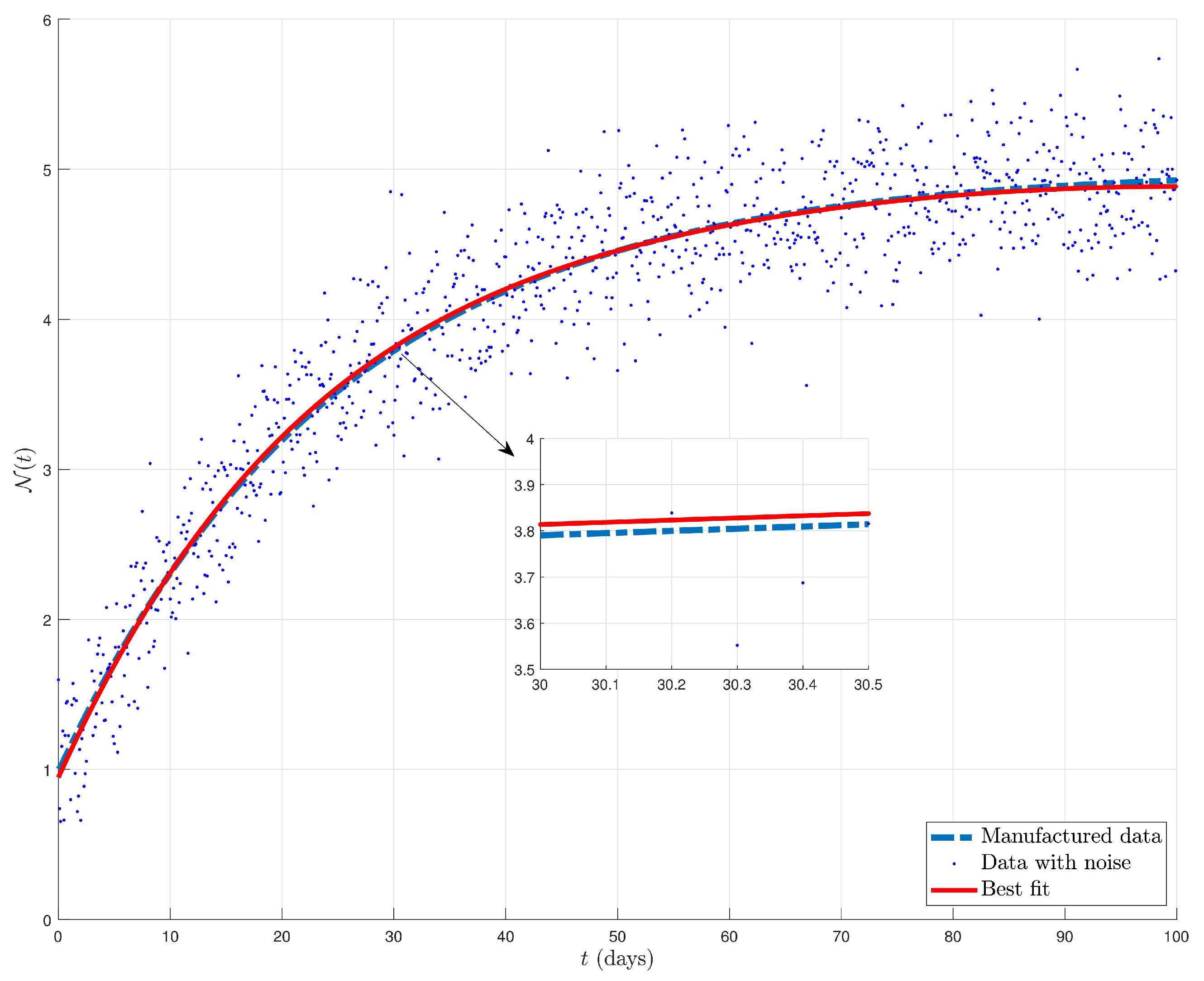
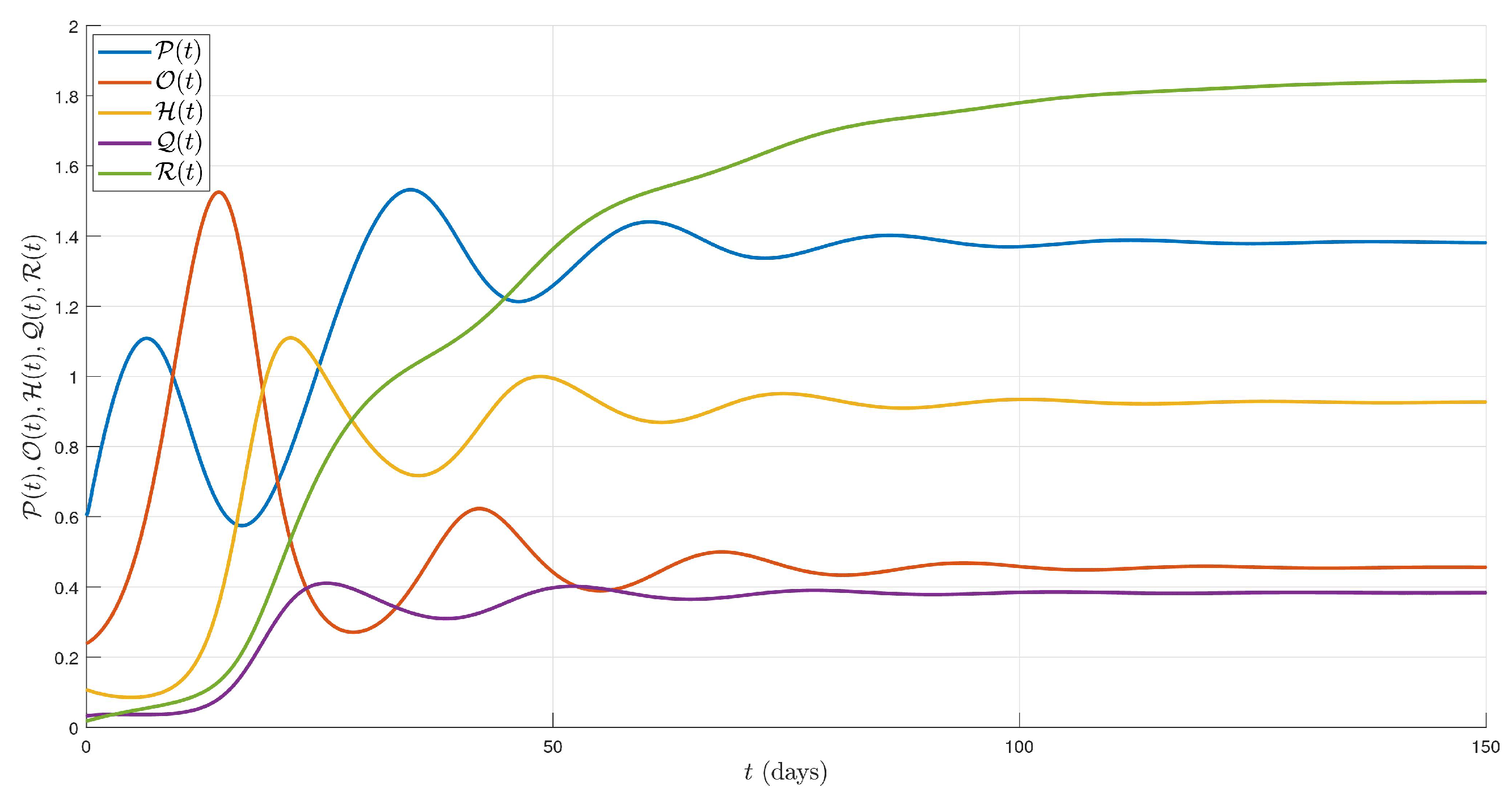
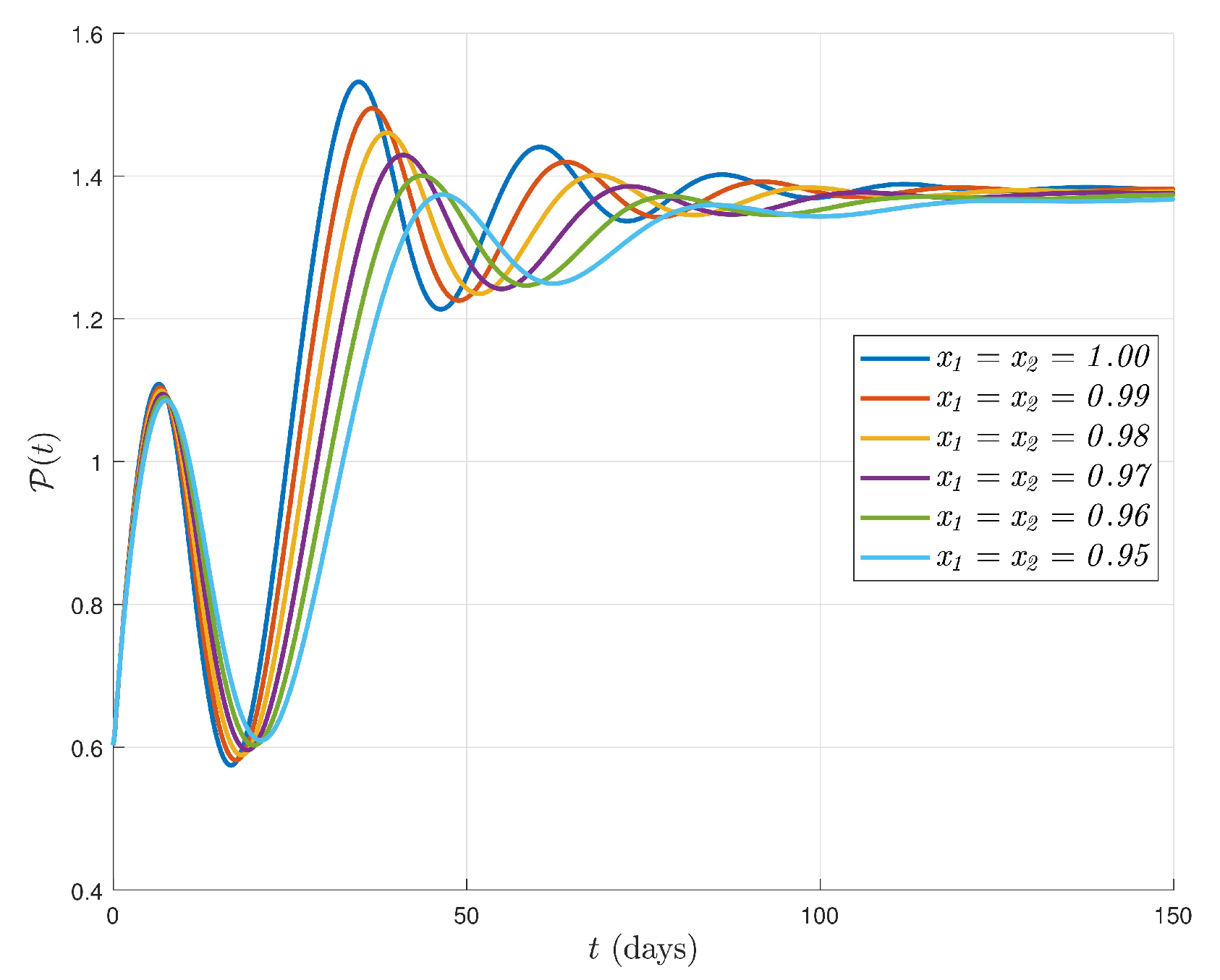

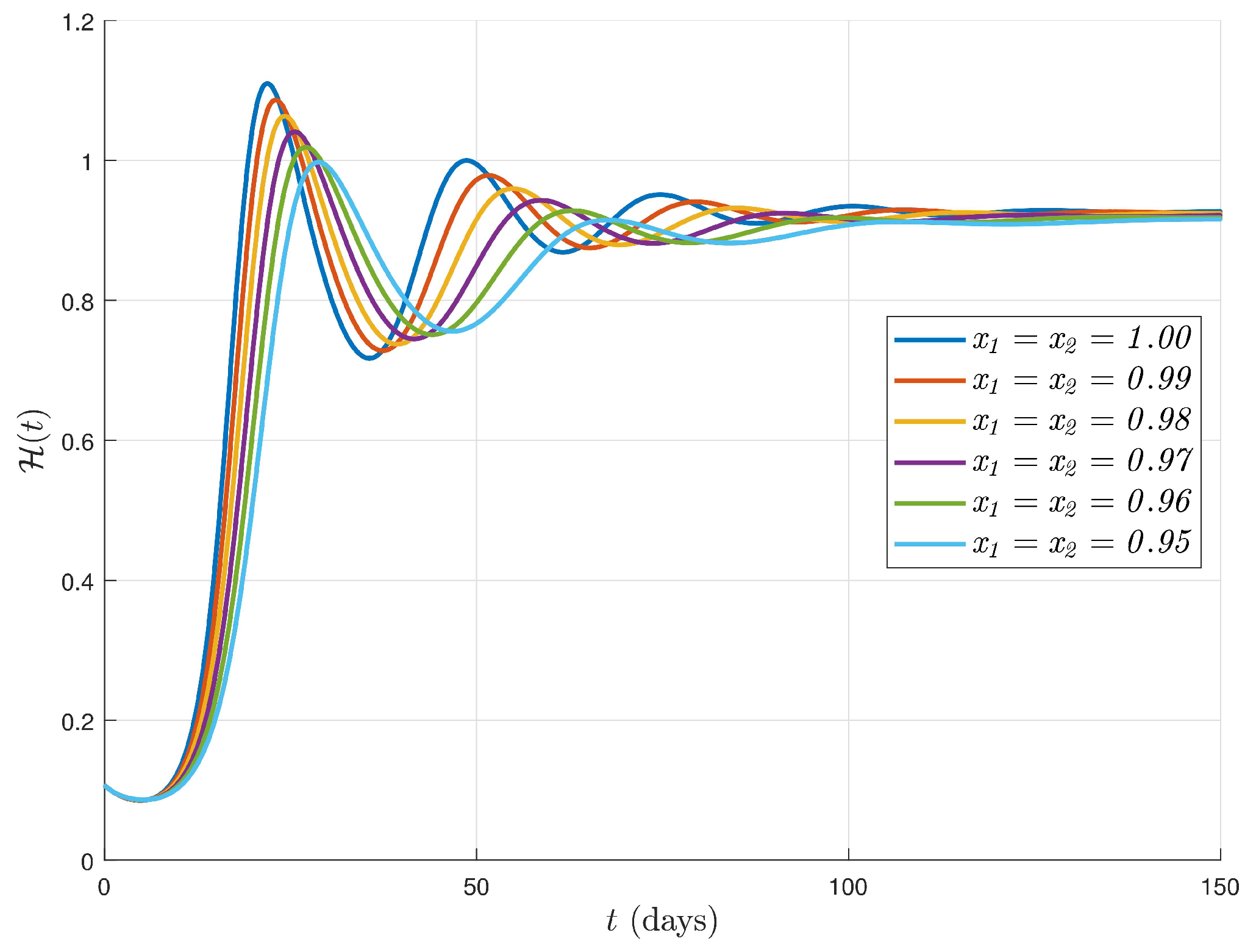
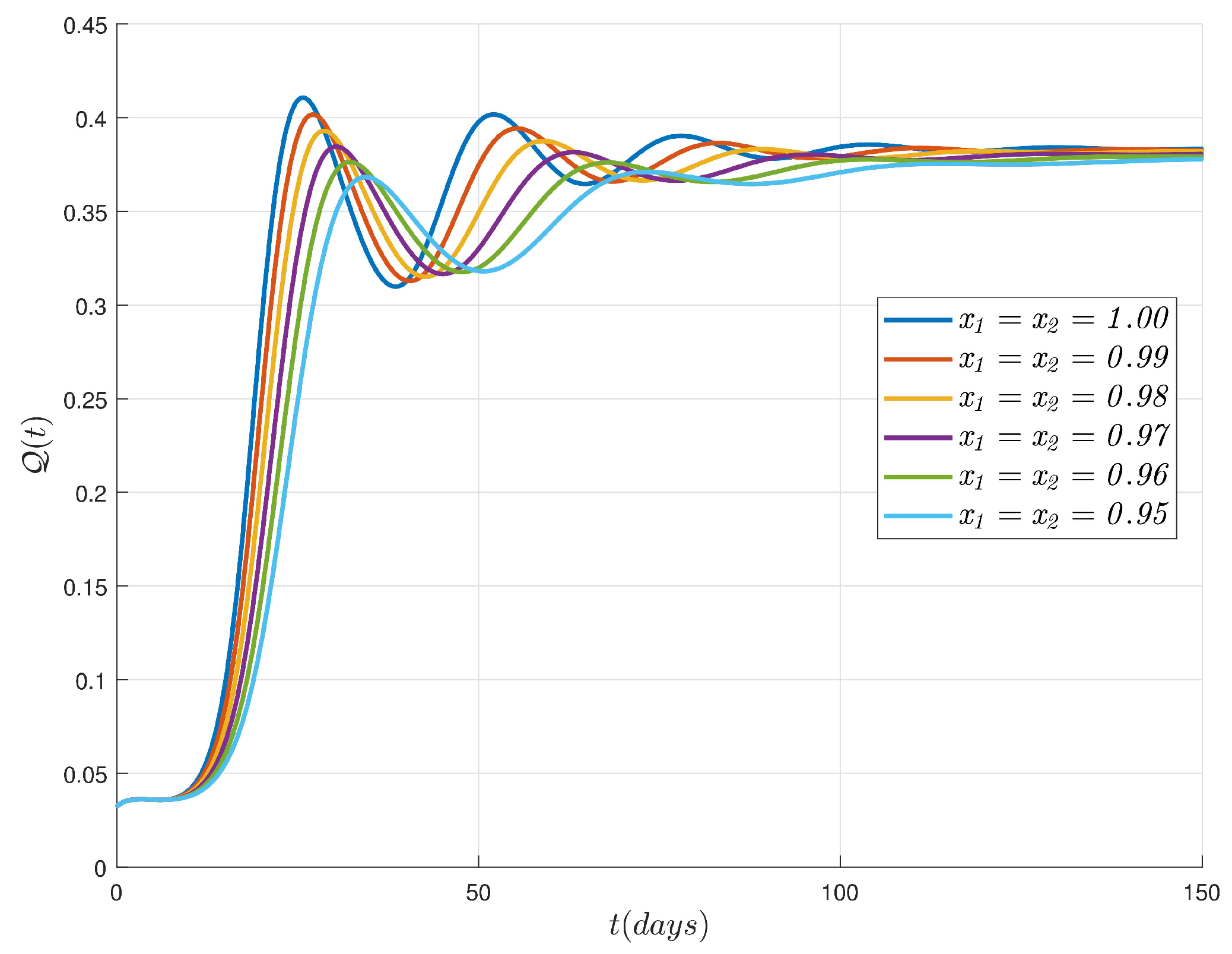
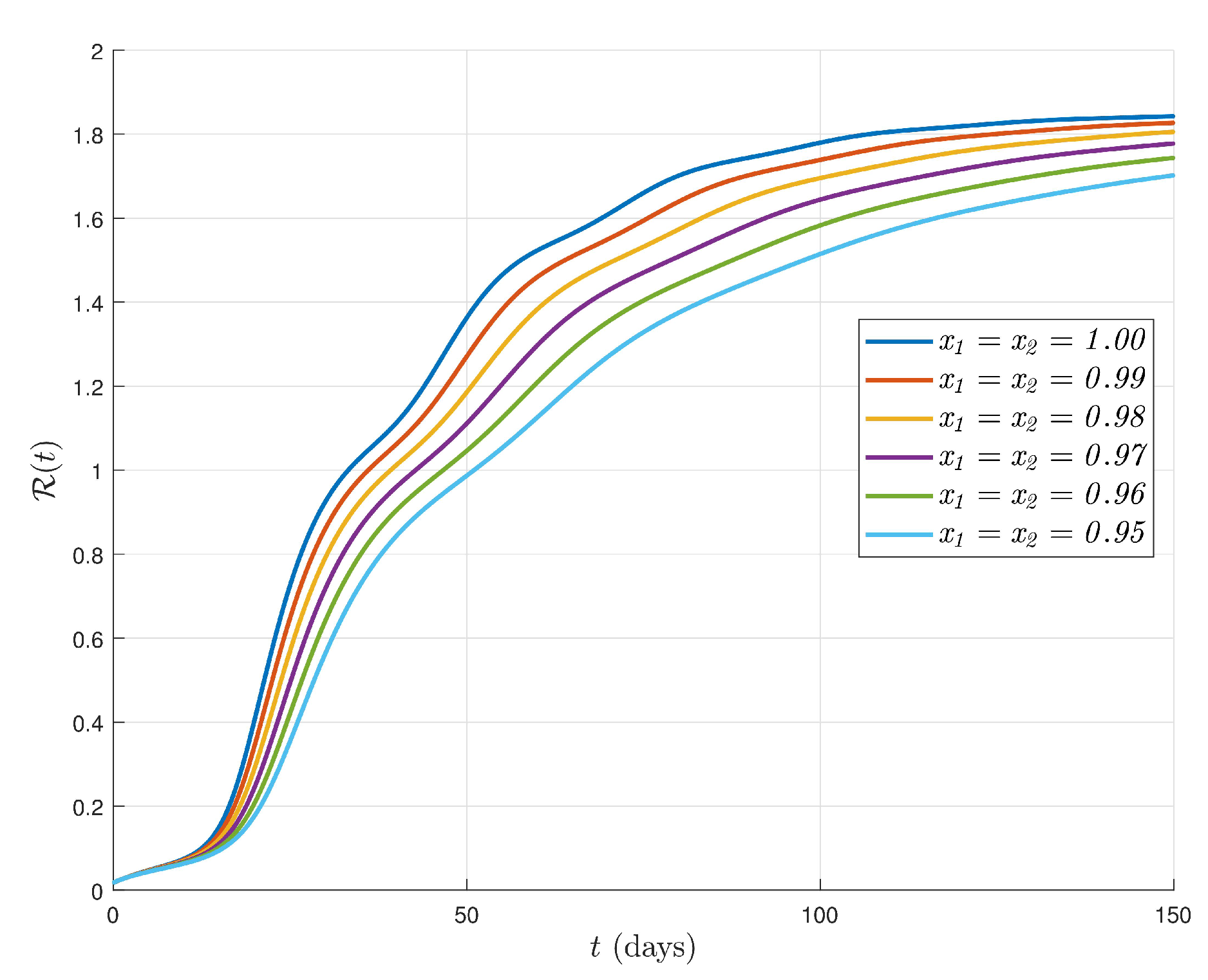
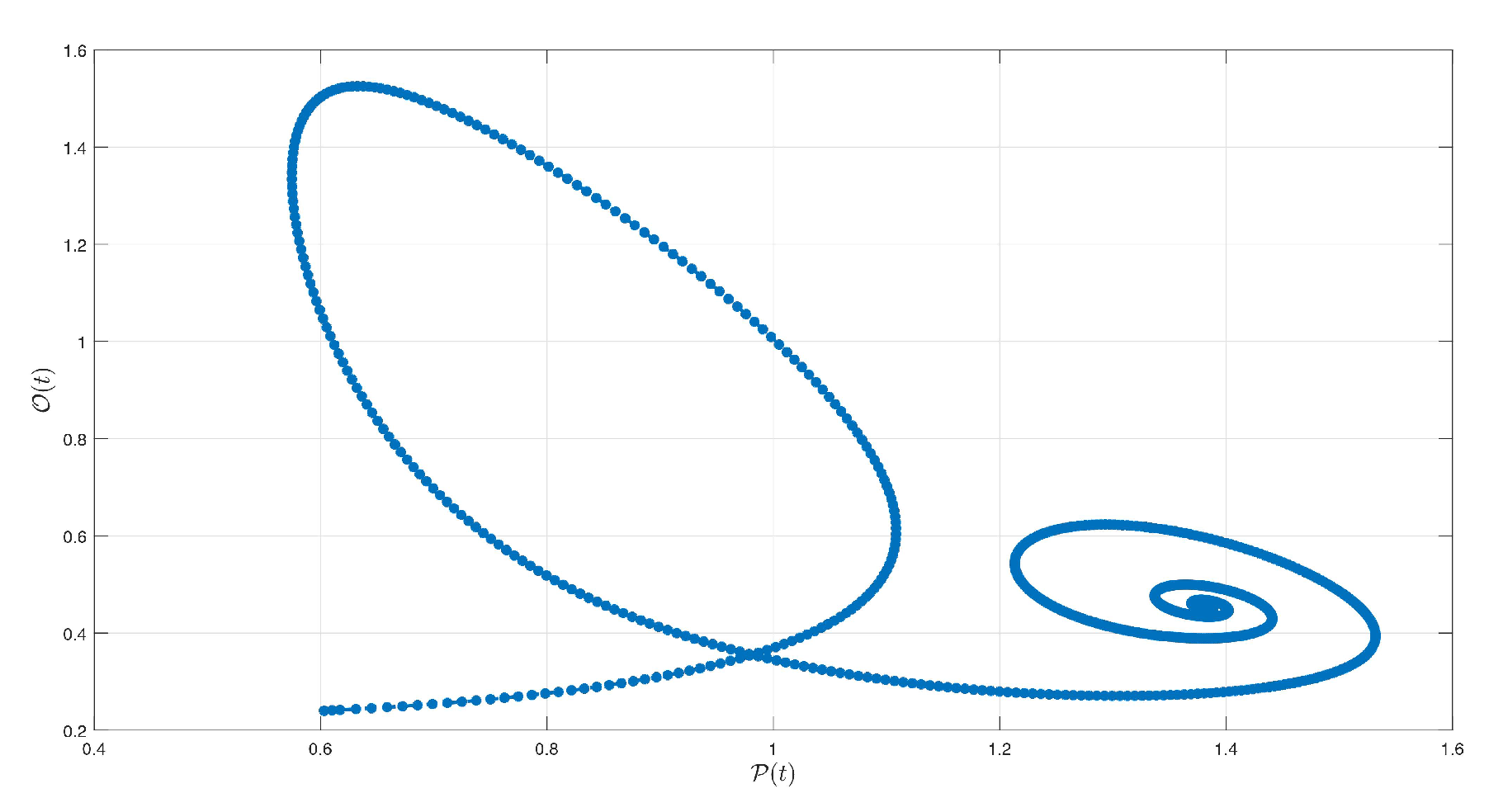

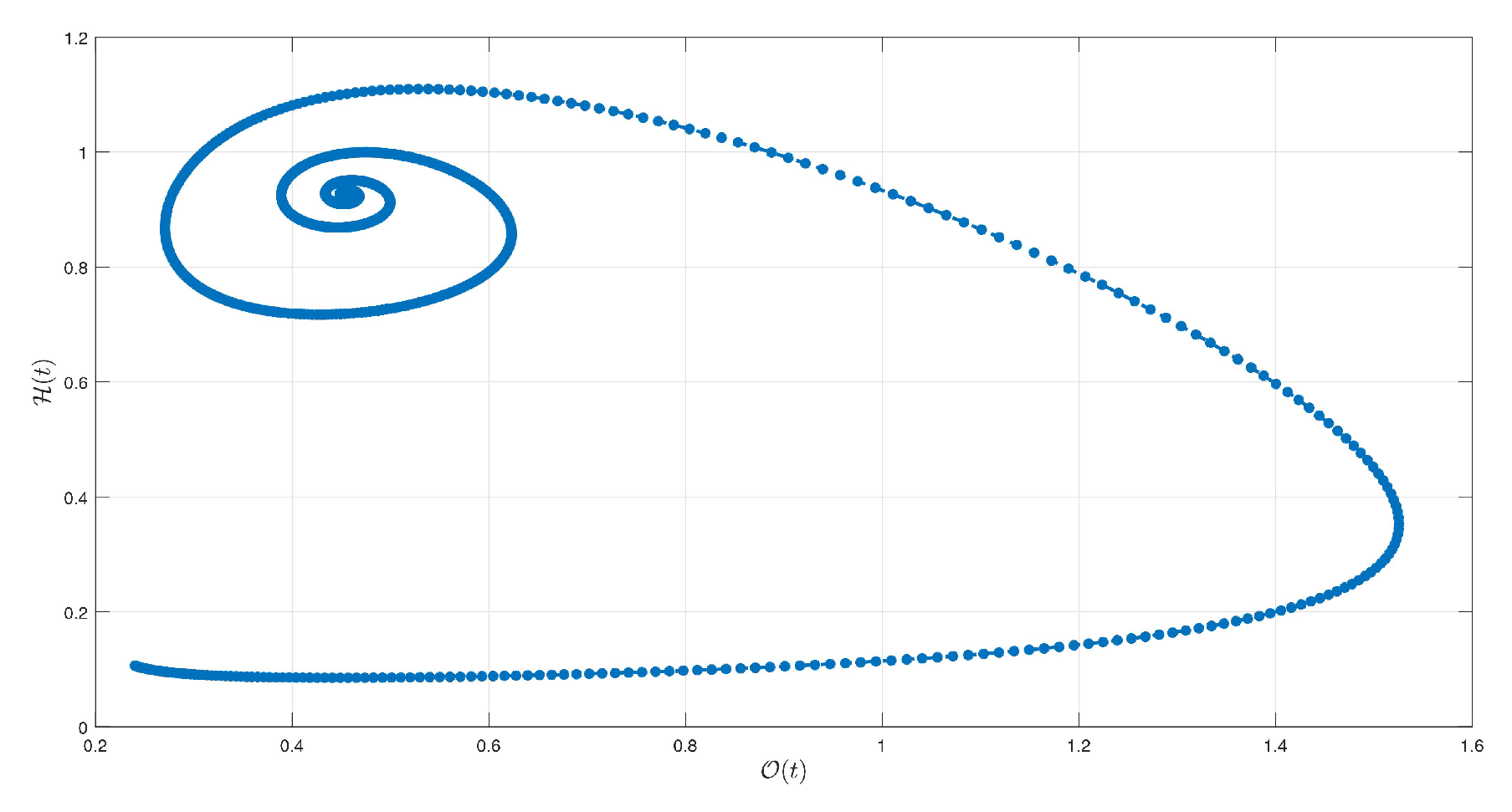
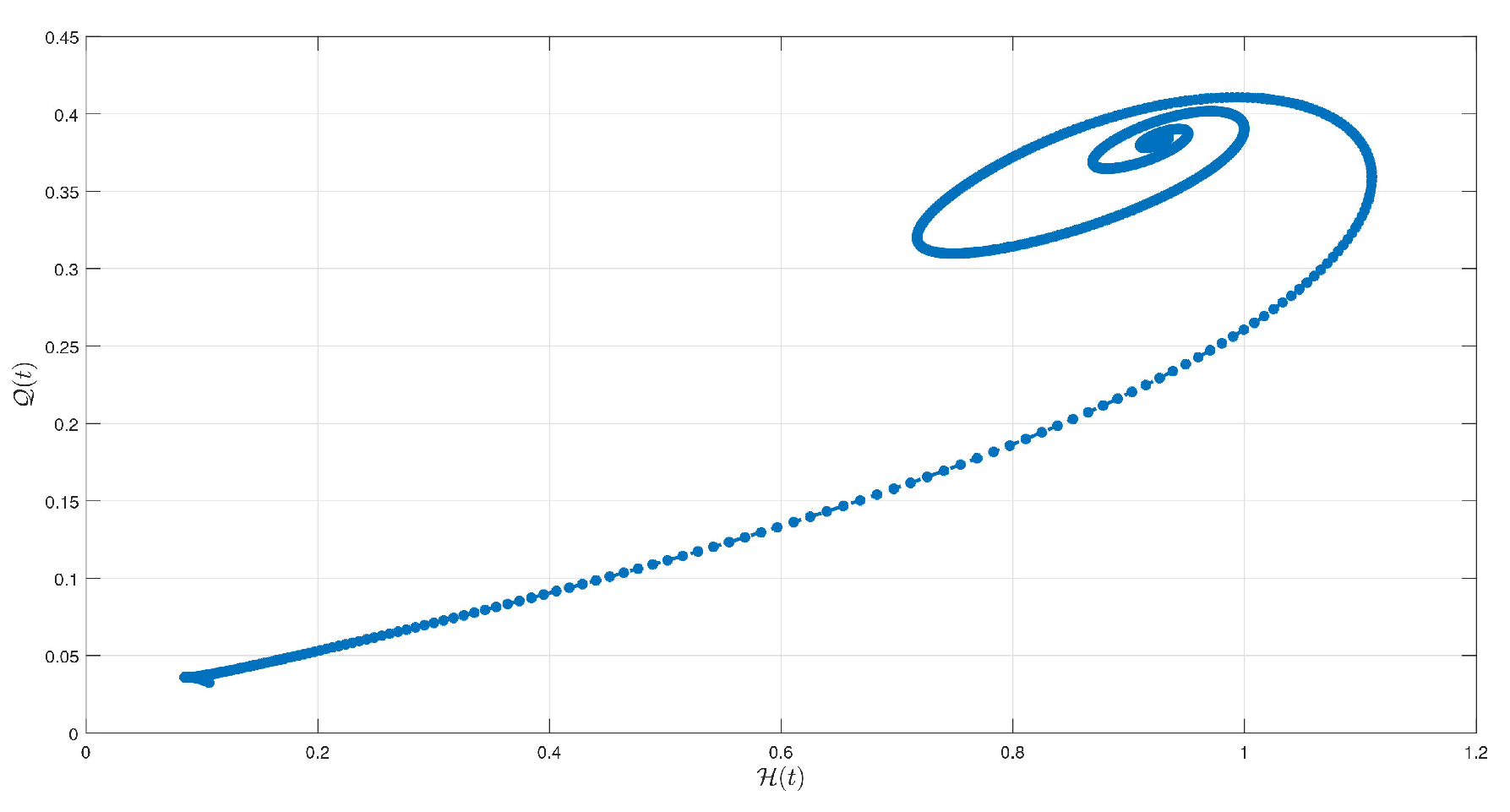
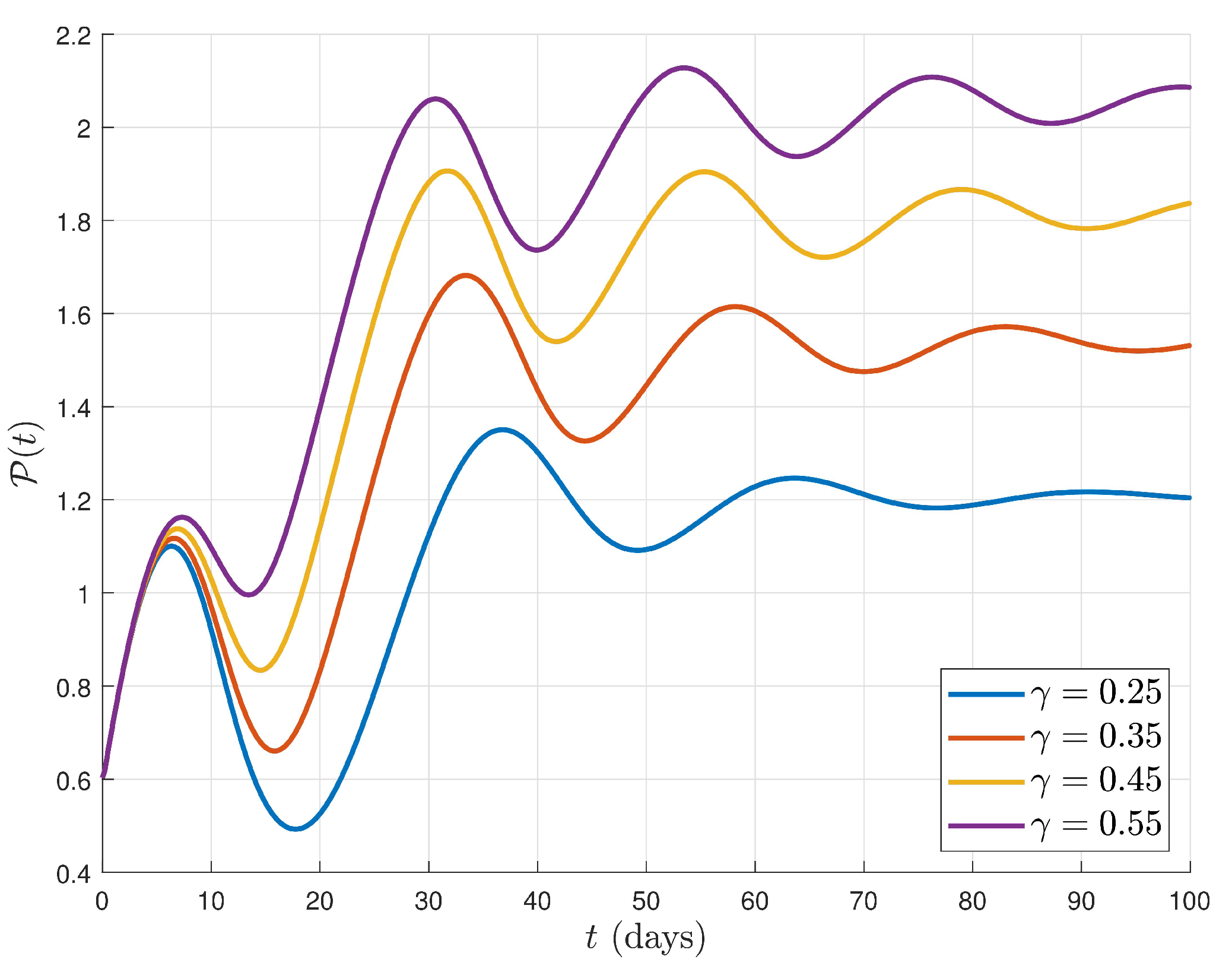
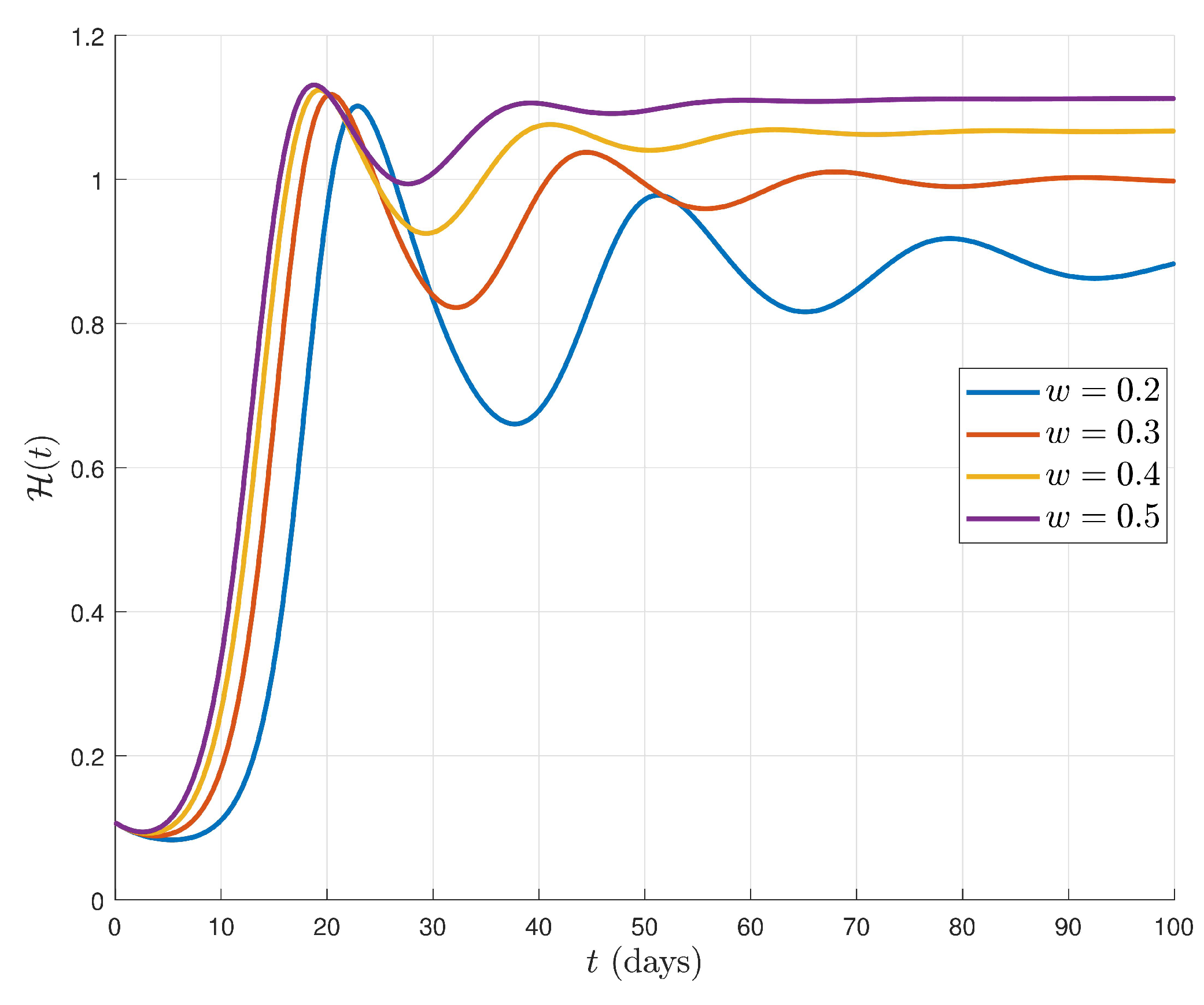
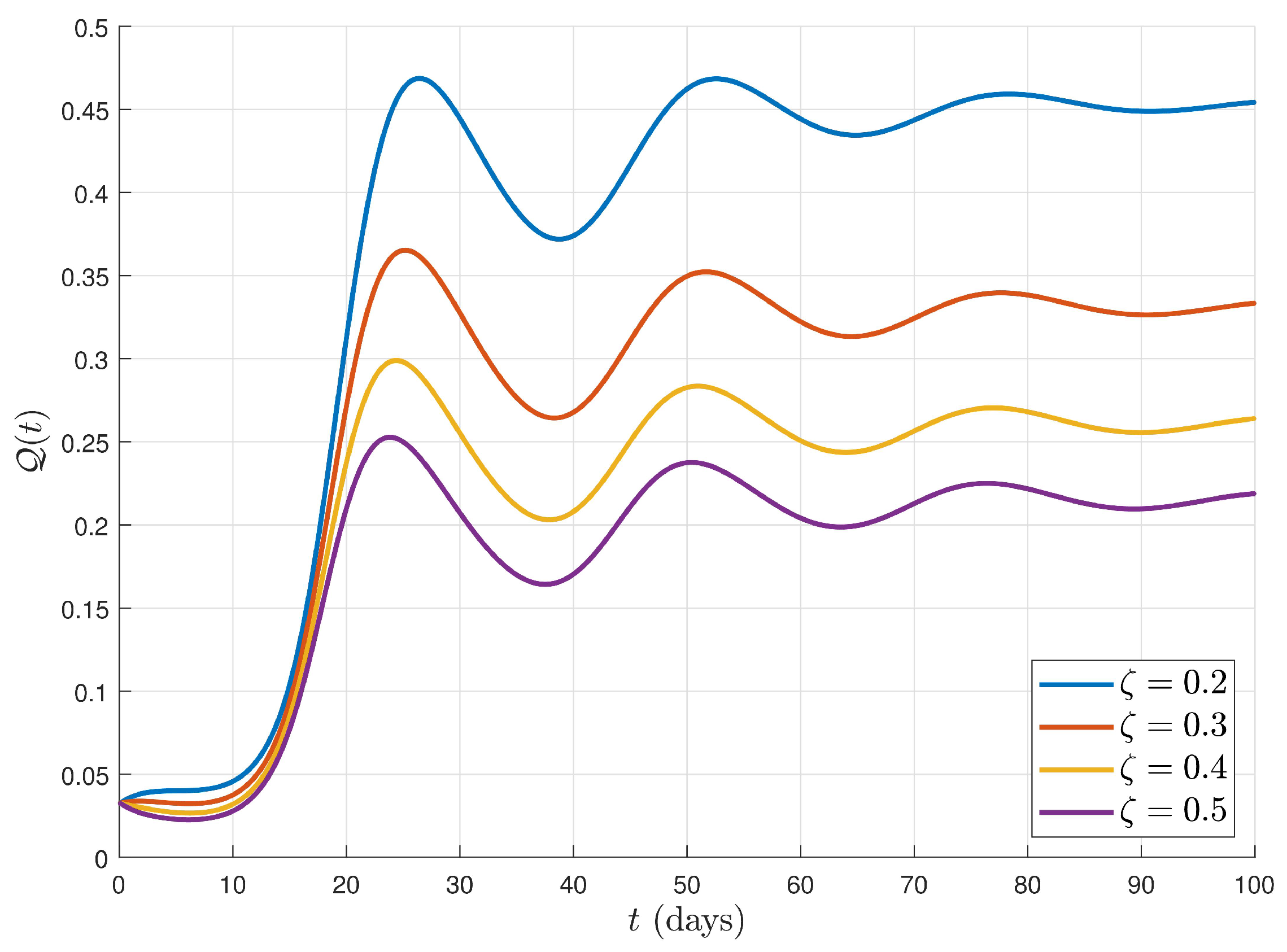
Publisher’s Note: MDPI stays neutral with regard to jurisdictional claims in published maps and institutional affiliations. |
© 2022 by the authors. Licensee MDPI, Basel, Switzerland. This article is an open access article distributed under the terms and conditions of the Creative Commons Attribution (CC BY) license (https://creativecommons.org/licenses/by/4.0/).
Share and Cite
Etemad, S.; Shikongo, A.; Owolabi, K.M.; Tellab, B.; Avcı, İ.; Rezapour, S.; Agarwal, R.P. A New Fractal-Fractional Version of Giving up Smoking Model: Application of Lagrangian Piece-Wise Interpolation along with Asymptotical Stability. Mathematics 2022, 10, 4369. https://doi.org/10.3390/math10224369
Etemad S, Shikongo A, Owolabi KM, Tellab B, Avcı İ, Rezapour S, Agarwal RP. A New Fractal-Fractional Version of Giving up Smoking Model: Application of Lagrangian Piece-Wise Interpolation along with Asymptotical Stability. Mathematics. 2022; 10(22):4369. https://doi.org/10.3390/math10224369
Chicago/Turabian StyleEtemad, Sina, Albert Shikongo, Kolade M. Owolabi, Brahim Tellab, İbrahim Avcı, Shahram Rezapour, and Ravi P. Agarwal. 2022. "A New Fractal-Fractional Version of Giving up Smoking Model: Application of Lagrangian Piece-Wise Interpolation along with Asymptotical Stability" Mathematics 10, no. 22: 4369. https://doi.org/10.3390/math10224369
APA StyleEtemad, S., Shikongo, A., Owolabi, K. M., Tellab, B., Avcı, İ., Rezapour, S., & Agarwal, R. P. (2022). A New Fractal-Fractional Version of Giving up Smoking Model: Application of Lagrangian Piece-Wise Interpolation along with Asymptotical Stability. Mathematics, 10(22), 4369. https://doi.org/10.3390/math10224369










